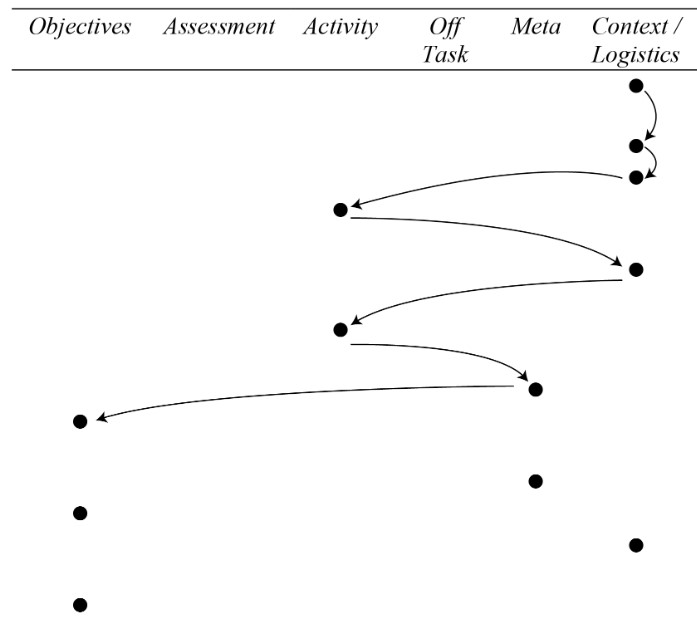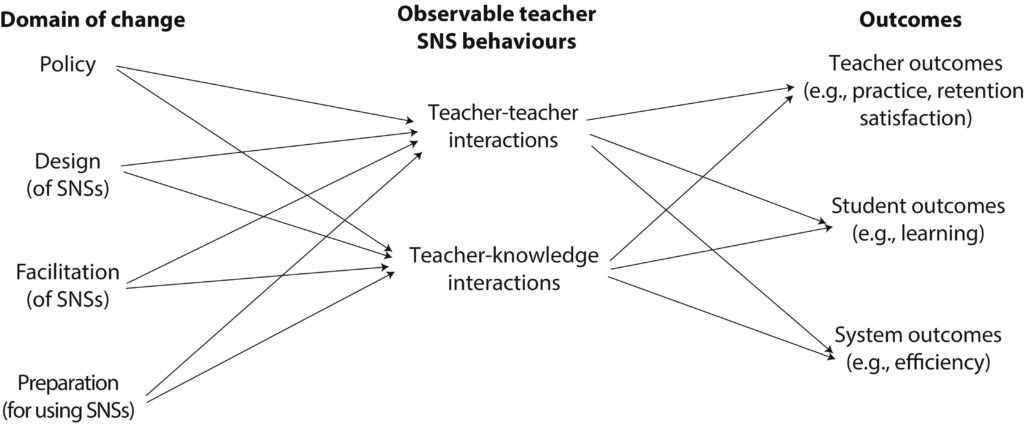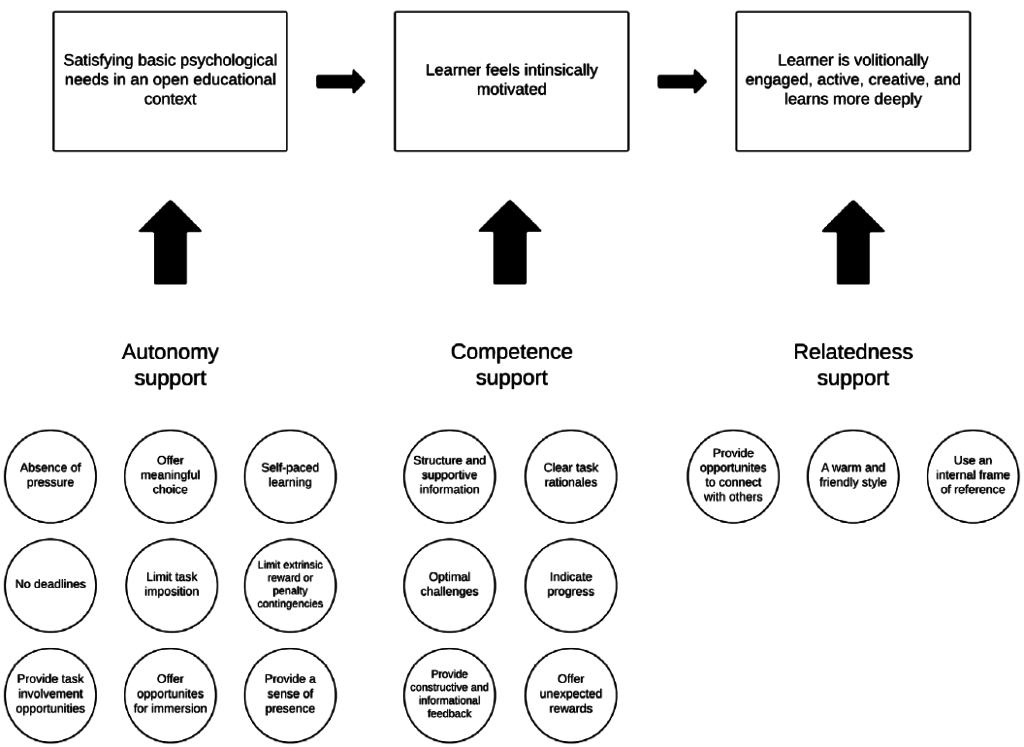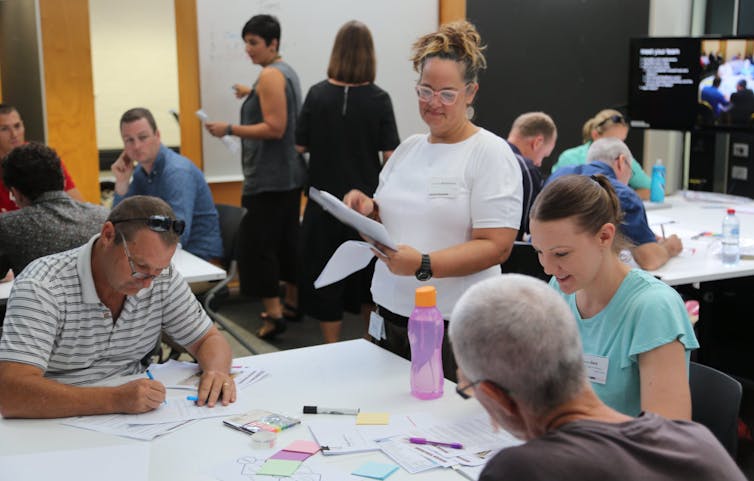There is an entire genre of journal articles about how teachers in social network sites are behaving, what they’re doing, and what benefits they’re getting. This refers to sites like Facebook, Twitter, Ning and EdModo.
Recent review papers by Macia & Garcia (2017) and Lantz-Andersson et al. (2018) gives some indication of quite how many articles are out there about teachers using these sites. I’m doing work at the moment with Bernadette Mercieca and Paul Mercieca to conduct a wide, integrative review, that looks at the methodology of studies of teachers in SNSs.
Teachers in social network sites
The rationale for studying what teachers in social network sites are doing is compelling:
- We know for sure that lots of teachers are using them
- They are getting all kinds of benefits, such as social/emotional support, exchange of resources, a place to get new ideas, and even occasionally a place to have serious conversations reflecting on practice (Kelly & Antonio, 2016)
- We want to know how to use social network sites better: How should they be used by individuals? How should policy around them be framed? How should they be a part of teacher education and school operations?
These are all great questions, but I feel like there is a growing need for more maturity in the methodology of studies of teachers in social network sites. Consider the “classic case” of many studies (some of my own included!) of teachers in social network sites:
- A sample is being studied that is chosen for convenience: an existing group in a social network site, a cohort of preservice teachers, a group of teachers within a single school, etc.
- Often teachers from that sample will self-select to be a part of a study
- Traces from the social network site are typically analysed in some way (coding and counting, social network analysis)
- Often a survey is conducted (again, often self-selected from participants in the social network site) for self-reported data relating to use of the social network site
In case it isn’t obvious, this is not a great recipe for any kind of generalisability from results. The volume of studies that have been conducted could potentially have led to meta-analysis for some kind of convergent validity–except that often there isn’t enough information included in many studies to know such basic information as:
- The size of a group (for groups are the unit of study)
- It’s focus (e.g., subject/region/theme/identity)
- How it was convened and if it is facilitated
A way to categorise groups productively is discussed by Kelly & Antonio (2016). The key issue is that without this kind of information, there will be no movement towards convergent validity of theories.
Towards theory
We have well and truly past the point of needing studies that point to the potential of social network sites for teachers; or that collect exploratory data from a one-off study. There are many such studies and on their own they are not contributing to a collective whole.
The ideal situation would be to work towards an understanding of how different types of group serve teachers in different ways and how approaches to designing/facilitating/convening groups in social network sites can better lead to desired outcomes (see for example Clarà et al., 2015; Kelly et al., 2015; Kelly et al., 2016; Mercieca et al, 2017).
The analogy is that of a chemical engineer trying to understand how to create a reaction of some sort–let’s say that she’s trying to create an explosion. She could work for years randomly combining elements to see what happens, in the hope of coming across something that works.
Far more fruitful would be to develop a theoretical understanding (say, the table of the elements) that allows her to predict what will happen when elements are combined.
In short, what we need is the kind of research that allows us to make theoretical propositions (about teachers in social network sites) that are generally applicable–or where the limits of generality are at least understood. The work of Kraut & Resnick (2012) gives us a glimpse of what such work might look like. We need methodological rigor else our whole domain risks failing to reach maturity.
Thanks to Professor Peter Reimann for the chemistry analogy, it comes from a conversation with him.
References
Clarà, M., Kelly, N., Mauri, T., & Danaher, P. (2015). Can massive communities of teachers facilitate collaborative reflection? Fractal design as a possible answer. Asia-Pacific Journal of Teacher Education, 1-13.
Kelly, N., & Antonio, A. (2016). Teacher peer support in social network sites. Teaching and Teacher Education, 56, 138-149. doi:http://dx.doi.org/10.1016/j.tate.2016.02.007
Kelly, N., Clará, M., & Kickbusch, S. (2015). How to develop an online community for pre-service and early career teachers. Paper presented at the ASCILITE 2015, Perth, Western Australia.
Kelly, N., Clarà, M., Kehrwald, B., & Danaher, P. (2016). Online Learning Networks for Pre-service and Early Career Teachers. Basingstoke, UK: Palgrave Macmillan/Palgrave Pivot.
Kraut, R. E., & Resnick, P. (2012). Building successful online communities: Evidence-based social design. Mit Press.
Lantz-Andersson, A., Lundin, M., & Selwyn, N. (2018). Twenty years of online teacher communities: A systematic review of formally-organized and informally-developed professional learning groups. Teaching and Teacher Education, 75, 302-315.
Macià, M., & García, I. (2016). Informal online communities and networks as a source of teacher professional development: A review. Teaching and Teacher Education, 55, 291-307.
Mercieca, B., & Kelly, N. (2017). Early career teacher peer support through private groups in social media. Asia-Pacific Journal of Teacher Education, 1-17.







